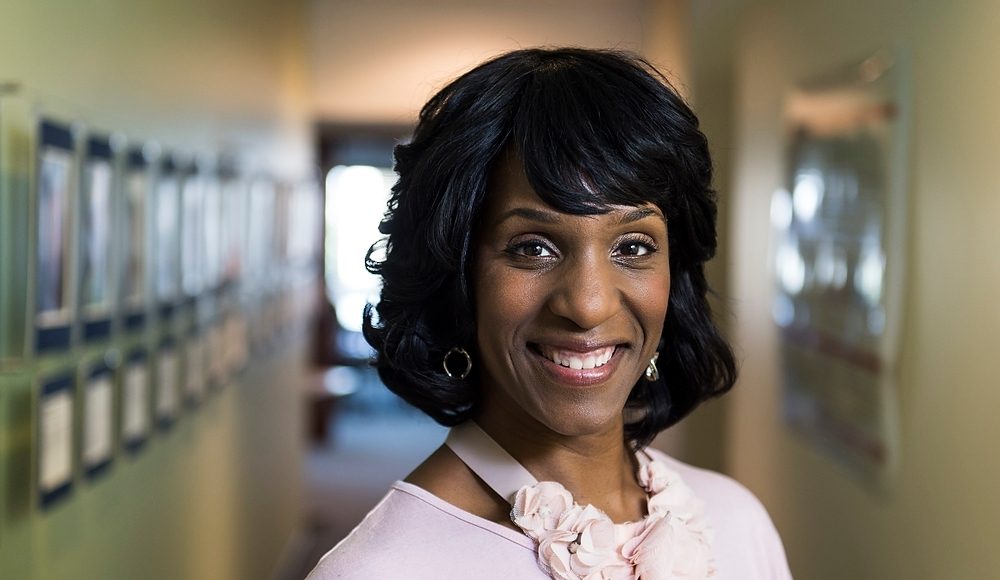For Angela Byars-Winston, becoming the first Black tenure-track, full-professor in the UW-Madison Department of Medicine in September was just another stepping stone in her career.
As a member of the National Academy of Sciences Higher Education and Workforce Development Board, a 2011 selectee for the Obama administration’s Winning the Future initiative as Champion of Change, and a recipient of a $1.4 million grant from the National Institute of Health to research the impact of diversity awareness on mentor-mentee relationships in STEM, Byars-Winston has no shortage of accomplishments.
As a trained social scientist, with a PhD in Counseling Psychology from Arizona State University, she has been dominating a life science world.
“For me being a PhD in a MD world is no small thing,” she told Madison365.
Her personal accomplishments have been the personification of her larger work which focuses on understanding how the racial, ethnic and gender identities of historically underrepresented people in STEMM (science, technology, engineering, math and medicine) impact their academic and career decision making and how they choose to balance those identities with their science identities.
“From a psychological perspective I’m really interested in how people navigate the space,” she said. “Do they choose to foreground their identity or background their identity? I’ve always wanted to understand the truth of people’s experiences and need and I’ve always been interested in the fact that I could systematically study how people make choices, especially around racial and ethnic identity issues. I’m just fascinated by the sociopolitical context and the social identities that intersect and shapeshift where Brown and Black women and men show up in STEMM.
“Many national surveys show high school students of color have more of an interest in science than their white counterparts and yet once we look at degree attainment we don’t see that same parity,” she said.
She works on both a faculty training level and a policy development level to research and remedy that.
“It’s a very interesting negotiation to address diversity in the STEMM space because those professions, in general, purport to be objective, evidence-based, ahistorical, acultural, acontextual disciplinary efforts and so to bring in diversity matters into STEMM is to bring attention to those things that are seen as devalued, dismissive and distracting to the actual doing of science,” she said.
Byars-Winston works with numerous national and international universities to help better integrate underrepresented people into the field, while also creating structural change to better accommodate those identities into the space.
“It doesn’t make sense to keep increasing the number of brown bodies in science if they’re just going to become another casualty of someone’s poor mentoring,” she said. “A mentoring relationship is the primary mechanism for growing the next generation of scientists.”
She is part of a national team developing a national research mentoring network (NRMN) that “emphasizes the benefits of diversity, inclusivity and culture within mentoring relationships,” according to its website. The team is funded by a $19 million dollar grant from the National Institute of Health.
Despite her numerous platforms, Byars-Winston still finds herself being accused of having a “race-baiting” agenda or being mistaken for wait staff at conferences.
“I tell people I have skin in the game when I do these trainings, this is not an exercise of ethereal abstract interests,” she said. With two daughters, one interested in being a physical life scientist, the impact of work quite literally hits home.
“Someday my daughter might be in one of these classes and I don’t want them to snuff the light out in her eyes,” she said. “I don’t want her beautiful dark ebony skin and curly hair to be considered distracting, but I also don’t want it to be ignored because it’s part of her experience.”
Nevertheless Byars-Winston persists in her quest to diversify STEMM fields on both a local university and a national level and her recent historic feat provides her with one more accomplishment to propel her work forward.
“I have an amazing, blessed moment historically to take advantage of the attention and how to use it for the greater good is what I’m thinking about now,” she said. “My biggest piece now is using my national and international platforms to create evidenced based reports and research that can generate policy changes.”




























